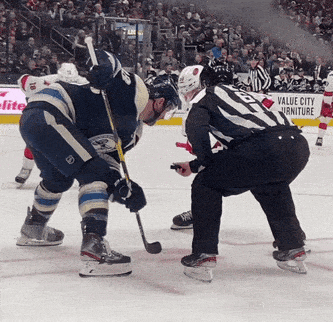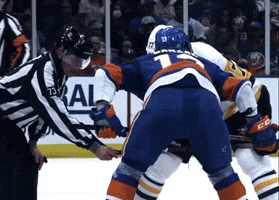Faceoffs: Watching The Official's Hand To Get An Edge On Winning Draws
Getting a head start on faceoffs
Virtually every hockey coach would agree that faceoffs are important plays. Often, teams use this reset as a time to use set plays, where each player knows their individual responsibility off of a won (or lost) draw. As such, being quicker to react and getting a head start is a competitive advantage. So how do we get the jump/head start on our opponents?
Simple - watch the official’s hand.
Ref’s Hand
Most referees don’t simply “drop the puck”; there are physics involved.
Let’s watch a faceoff from a Blue Jackets game I attended. Watch the referee’s hand.
What did you notice?
Here is a better view: Again, notice the referee’s hand.
What’s the Detail?
If you notice the “up then down” movement, you’re spot on!
When a referee puts his arm straight out, he must contract his bicep muscle by pulling the arm upward before powering the puck onto the ice.
You’ll notice Jeff Carter (#77 on Pittsburgh in the above video) tilts his head and stares directly at the referee’s hand. As soon as the arm goes up, he starts moving.
Therefore, players should be keying in and watching the referee’s hand when lining up for a faceoff. As soon as the upward movement starts… boom!
Most leagues will have referees that will present the puck or, at very least, start with it at their belt.
Minor Hockey
While these clips are from the NHL, most youth and minor hockey referees don’t want to be hit by sticks or players during the (often wild) aftermath of a faceoff. They will be more upright and/or further away from the faceoff dot. This makes this ‘up and down’ movement even more pronounced.
Next time you’re at the rink, take a quick look at how the referee drops the puck. It just may help you win that important faceoff at a key time.
Further Reading
Did you enjoy this newsletter?
Help us spread the ideas within and share it with the people you care about



